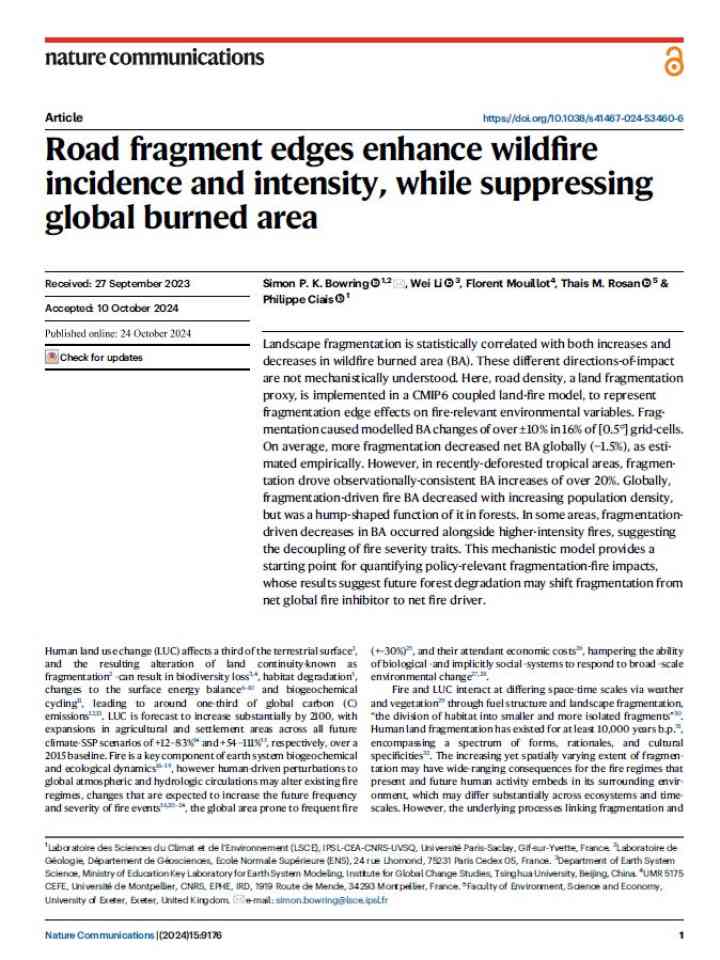Road fragment edges enhance wildfire incidence and intensity, while suppressing global burned area
This study is built around conceptualising and developing the process-based links between the edge effects of land fragmentation on observed land surface and human ignition variables that can conceivably affect fire probability and behaviour. Landscape fragmentation is statistically correlated with both increases and decreases in wildfire burned area (BA).
Globally, fragmentation-driven fire BA decreased with increasing population density, but was a hump-shaped function of it in forests. In some areas, fragmentation-driven decreases in BA occurred alongside higher-intensity fires, suggesting the decoupling of fire severity traits. This mechanistic model provides a starting point for quantifying policy-relevant fragmentation-fire impacts, whose results suggest future forest degradation may shift fragmentation from net global fire inhibitor to net fire driver.
Explore further
